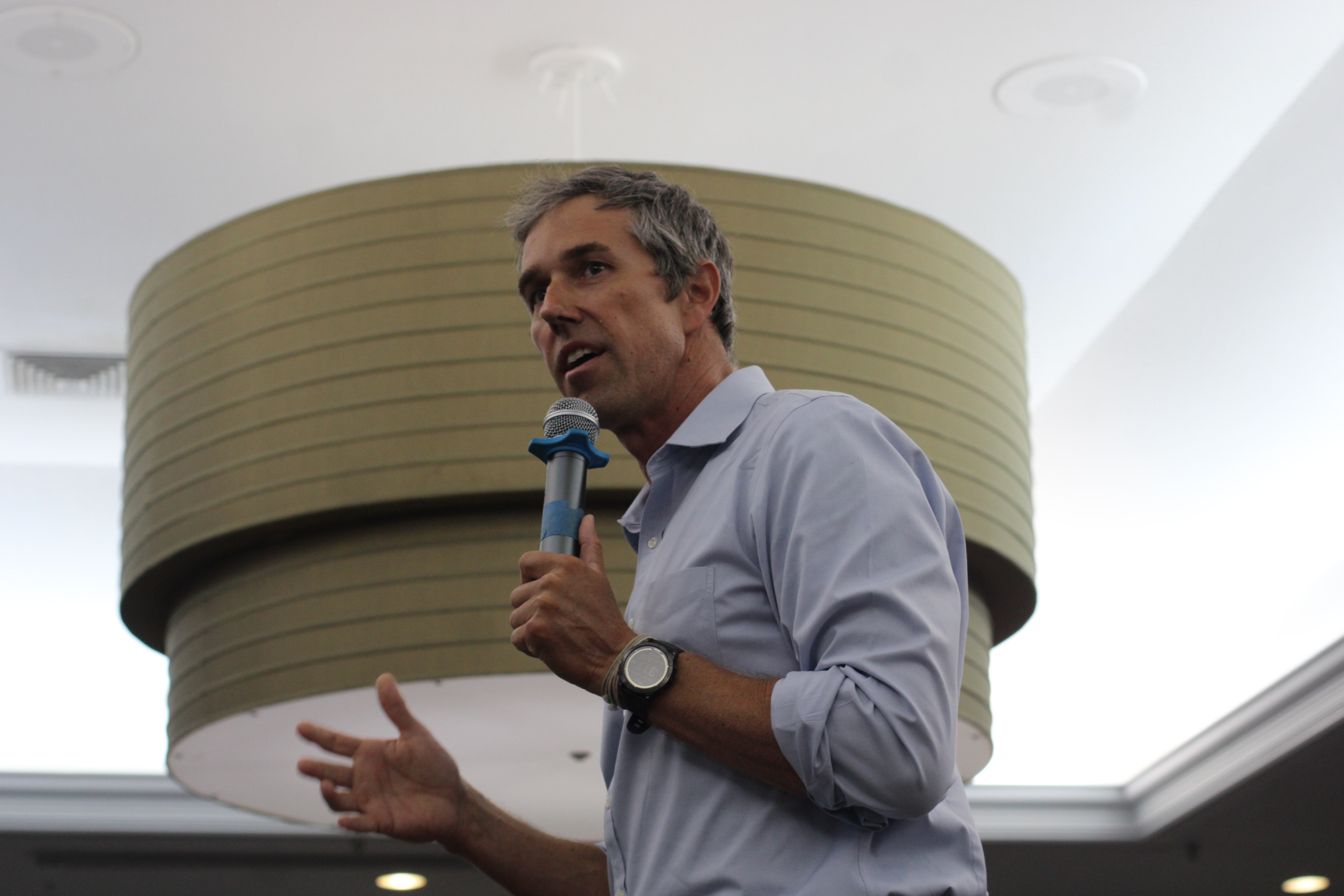LOOK TO THE FUTURE
Published 2:25 am Sunday, May 19, 2019

- LOOK TO THE FUTURE
Recently a friend lamented having to kill wasps that had built a nest over her front door. She knew to humans they were a pest, but figured they must have some role in nature or they would not be here.
About the same time, someone wondered why Michigan is concerned that Louisiana crawfish brought in for boils were escaping into the state’s waters. They did not see a problem, possibly not thinking about the problems caused by giant salvinia, zebra mussels, lionfish and other invasive species.
Ironically, both comments came just days after a U.N. report said as many as a million plant and animal species were in danger of becoming extinct, and if they do it will be a major impact on other plants, animals and humans.
There are a number of causes sited, including climate change, human encroachment, chemicals and overharvest. None of that should come as a surprise. The world’s population has doubled since 1950 and urban sprawl worldwide has doubled since 1992. That population increase has put additional pressure on land and sea.
Unfortunately, most people ignore stories like this because they think it does not involve them. Just look around East Texas, though, where once there were wild turkeys, black bear, bobwhite quail, paddlefish, horned lizards and elm trees. All are gone or nearly gone for one reason or another. And more are already gone or threatened across Texas.
“With regards to freshwater fish, the extinction rate has averaged almost eight species extinctions per decade since the 1950s,” said Craig Bonds, Texas Parks and Wildlife Department Inland Fisheries director. “Of the 191 species of freshwater fishes known to occur in Texas, five are likely extinct and 36 are currently considered to be at threat of extinction.”
Historically and today, the threat to native fish species comes from habitat changes and the introduction of non-native species that either hybridize or outcompete the native species.
Fortunately for freshwater sport fishermen, there are not any game species in real trouble. However, two lesser-known species, the sharpnose shiner and smalleye shiner, are. Both exist only in the Brazos River above Possum Kingdom Reservoir.
“These two species only live for two years and have a unique reproductive strategy that involves upstream migrations where they congregate and broadcast their eggs into the water column. The eggs then drift downstream, requiring long expanses of flowing rivers for the eggs to develop. The wide, sandy and braided stream channel of the upper Brazos River provides the ideal habitat for these species to thrive,” Bonds said.
Unfortunately, saltcedar was introduced in the area and has not only changed water flow, but also changed the riverside soil composition to the point it has impacted spawning success.
Bonds said the department is currently working with landowners along 263 miles of the Brazos and its tributaries to eradicate the invasive saltcedar that also impacts wildlife species like quail and turkeys.
Fortunately the news is better for saltwater species. Only the smalltooth and largetooth sawfish are considered endangered and the smalltooth has not been in Texas waters since the 1980s and the last largetooth sawfish was seen in the 1960s.
However, the Kemp’s Ridley sea turtle, one of five saltwater turtles found in Texas, is also endangered.
When it comes to wildlife species with threatened futures, the list is larger running from small reptiles to mammals and birds.
“On the wildlife side, Central Texas salamanders are all very rare, endemic, and all very much at risk along with other endemic cave-dwelling species, including many invertebrate species. There are several amphibians at risk, including the endangered Houston toad,” said Clayton Wolf, Wildlife Division director.
“Also at risk are a whole host of wildlife associated with native grasslands, including bobwhite quail, Texas kangaroo rat, swift fox, plains spotted skunk and more. There are also many rare plants endemic to Texas that are at risk, including Navasota ladies’ tresses, large-fruited sand verbena, prostrate milkweed, ambrosia, Texas snowbells, Texas poppy mallow, Texas wildrice, Texas prairie dawn and several species of cactus,” Wolf added.
Like with freshwater fishes, there are a number of factors that are causing the disappearance of these species from temperature changes, to land fragmentation or changes in use, the use of chemicals and competition of non-native species or disease.
The latter is interesting and shows the problem facing biologists because invasive species and diseases can get their start in Texas in so many ways.
Zebra mussels were brought in to the U.S. in the ballast of commercial ships. Giant salvinia was purposefully brought over for backyard ponds. White-nose syndrome, a disease biologists fear could kill millions of Mexican free-tailed bats, was possibly brought into this country by tourists who encountered the fungus while touring caves in Europe. Lionfish, which are expanded in the Gulf of Mexico, are believed to have found their way into U.S. waters from aquarium owners dumping the fish. They have been found in shallow water to depths as much as 1,000 feet around drilling rigs.
The concern is they can eat up to 30 times their stomach volume and more than 70 saltwater species have been found in their stomach.
The question is why should we care about something like a rat, a shiner or a plant that looks like a weed?
“Texans should be concerned about a loss of species because such loss is an alarm bell signaling that something is amiss and the health of the ecosystem upon which we depend is in jeopardy,” Wolf explained. “Many of the first species to decline are the most sensitive to ecological deterioration. These species can be viewed as the proverbial canary in the coal mine signaling changes that, if not taken seriously, will ultimately jeopardize our own survival. Such species provide us with ‘red flags’ to notice and make changes to avert ecological decline while there is still time to make effective changes. Aldo Leopold, a great conservation leader, once said, ‘To keep every cog and wheel is the first precaution of intelligent tinkering.'”
He added it is important to understand various species are interconnected and every ecosystem has its role.
“In more pragmatic terms that folks can understand, forests mitigate the heat island effect and lower temperatures in our built environments,” Wolf said. “Prairies provide unequaled storm water infiltration. Wetlands provide flood protection. All of these habitats provide filtration so we have clean air to breathe and clean water to drink. All of these ecosystem services function best in highly diverse, native habitats supporting highly diverse wildlife populations. In addition to our physical well-being, a diverse ecosystem has a positive impact on our mental health.
“For you and I, this might include a hunting trip to pursue our favorite game species, for others it could be wildlife viewing, and for others it may just be the sense of knowing that wild things and wild places still exist,” Wolf said.
Texans should care about the loss of species in our great state. Whether this concern originates from a utilitarian, self-preservation perspective or from the belief that all species have an inherent value, we should all be concerned when our ecosystem begins to show signs of distress. These are the same ecosystems that support us.
Some help is possibly on the way in the form of $1.3 billion nationwide through the Recovering America’s Wildlife act. However, it is not a sure thing. The last time Congress considered the funding, the bill itself became extinct.






